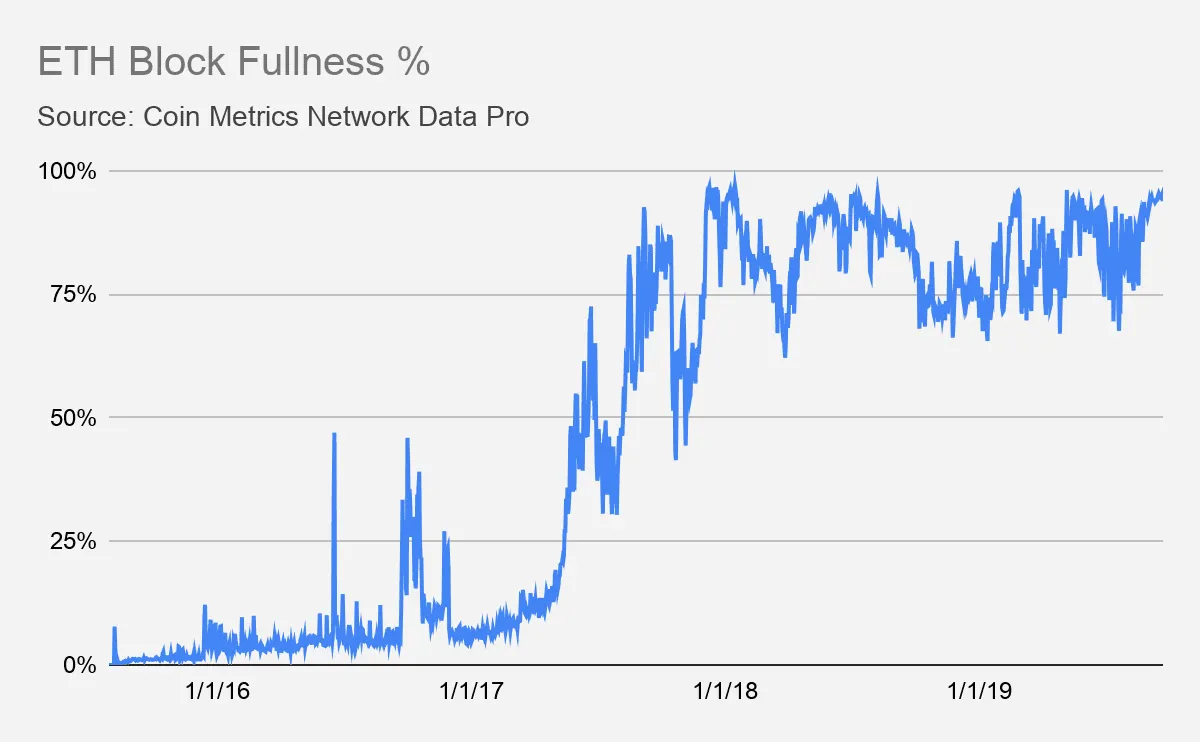Ethereum’s network capacity has been expanded by the mining community to allow more transactions to be processed on the network per second. This is in light of increased traffic on the network, largely due to controversial stablecoin Tether and a gambling game called Fair Win.
Ethereum co-founder Vitalik Buterin relayed last week that block producers were starting to raise gas limits, in light of the network’s congestion. On Ethereum, gas is a separate cryptocurrency used to pay transaction fees and the gas limit essentially controls how many transactions can be included in a block. It’s similar to Bitcoin’s block size limit.
But on Ethereum, gas limits are more organic. Each miner can raise the gas limit by 1/1024 of its current value, slowing edging it up or downwards, as the network gradually adapts to its environment.
Today, miners continued to drive up the gas limit, causing it to break above 10 million per block, an increase of 25 percent over the last week. This means each Ethereum block can now include roughly 25 percent more transactions than they could the week before.
This allows the Ethereum network to process more transactions per second, helping to keep fees lower. But, it does mean the blockchain will get bigger more quickly, making it more expensive and difficult for nodes to keep running the network.
What's Causing Congestion?
Tether appears to be the main culprit behind Ethereum’s increasing transaction count. Over the past few months, the stablecoin has been removing tethers issued on the Bitcoin network, and replacing them with tokens issued on Ethereum. Since so many Tether transactions are made each day, this has put a lot of load on the Ethereum network.
Addressing the situation in an interview with Canadian outlet, The Star, Buterin remarked, “Scalability is a big bottleneck because the Ethereum blockchain is almost full.”
Earlier this month it was revealed that 25 percent of all Ethereum activity was due to Tether transactions.
But Tether isn’t the only coin taking up such a large amount of the Ethereum network. Fair Win, a blockchain-based betting game, has accrued $1.17 million in transaction fees over the past 30 days, showing that it is responsible for a high number of transactions.

According to intelligence provider Glassnode, Decentralized Finance (DeFi) apps are also putting strain on the network as they are become more popular. It notes that around 45 percent of transactions were made by smart contracts—largely used by DeFi applications.
The issue reached fever pitch on September 20, when Ethereum's daily transaction fees surpassed Bitcoin’s for the first time since March 2019. At the time, Ethereum users paid $207,000 in transaction fees versus just $180,000 for Bitcoin. Ethereum diehards saw this as a good thing because it showed that the network was seeing high demand.
But Ethereum rival, Tron CEO Justin Sun took advantage of the situation, encouraging people to use his network for lower fees. In the past he has tried to tempt Ethereum developers away from the platform, offering grants, but with little success.
Rising Controversy
While not causing as much controversy as the Bitcoin Cash proposal to raise the blocksize—which resulted in an almost catastrophic hard fork and Bitcoin SV—the gas limit increase was still regarded by some as a controversial move.
One Bitcoiner, a student at Stanford Law School, argued that the gas limit raise showed the network was centralized, not decentralized as many Ethereum proponents argued. He said that it showed the high level of control that Ethereum miners have over the network.
In response, John Adler, a scalability researcher at ConsenSys (which funds Decrypt), asked, “Did you miss the weeks-long campaign by the community to get miners to raise the gas limit? It was pretty extensive.”
The other issue raised by the gas limit increase, is that it allows for more transactions per block on the Ethereum blockchain. This means the total size of the blockchain will increase at a faster rate—causing more strain on all Ethereum nodes. Miners will have to shell out more money buying equipment with more extensive storage. Something that could help to make the network more centralized if miner numbers declined.
But while the network is slowly growing its capacity, new Ethereum blocks are already starting to hit the new limit, suggesting the gas limit is going to need another raise sooner rather than later.

